ROBERT THE BRUCE 1274 - 1329 |
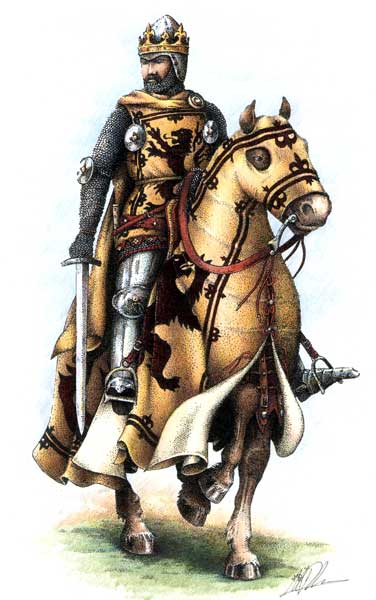 |
King Robert The Bruce born in Turnberry, Ayrshire in 1274, Robert the Bruce was the Earl of Carrick. His grandfather, also Robert, had been a contender for the throne in 1292, however lost out in favour of John Balliol. Balliol's reign, however ended in 1296 when Edward I of England's army crossed the River Tweed and butchered most of the population of Berwick. For some time Scotland was without a King and Edward's desire to conquer Scotland looked like a strong possibility. In the meantime the people of Scotland had found a new leader in William Wallace, son of a Clydesdale Laird. He led the Scottish army to a remarkable victory at Stirling Bridge in September 1297. However, Wallace later tasted defeat several times before being betrayed and captured by the English in 1305. Robert the Bruce seized his chance of the throne in 1306 and was crowned on Easter Day of that year at Scone. His early days as King did not go well and after a defeat at Perth he spent over a year in hiding. When Bruce reappeared he was determined to lead the cause for Scottish independence and on Mid-summer's Day 1314 he defeated the mighty army of Edward II at Bannockburn, near Stirling, and with that victory he marched into the history books. Bruce reigned for 15 more years before passing away peacefully at his manor in Cardross, Dumbarton. His bones were taken and buried at the Abbey at Dunfermline and on his dying request, his heart was removed, placed in a casket and later taken into battle by his friend Sir James Douglas. His heart was later buried at Melrose Abbey. Just before he died (the possible cause was leprosy), in 1329, Bruce asked that his heart should be taken out of his body, and that Sir James Douglas should carry it with him to fight against the Saracens in Spain. Douglas obeyed the king, and the heart was enclosed in a silver |
casket. Sir James died in battle, and the casket found under his body on the battlefield. The heart was returned to Scotland, where it was buried at Melrose Abbey.
|
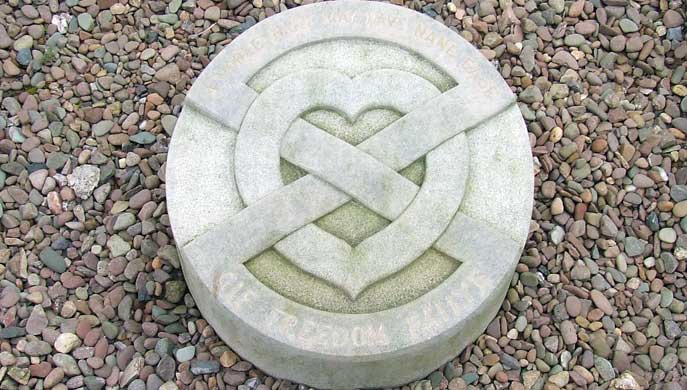 |
| Bruce was born in 1274 and so was only a few years younger than Wallace. He emerged as a real hero after Wallace was executed, fighting the English in his place. He adopted Wallace's guerilla strategy, winning back territory, village by village, town by town, until his final victory at the Battle of Bannockburn in 1314. Contrary to what is shown in the plot of Braveheart, Bruce prepared well for this battle and deliberately drew the English Army to him. He most definitely did not just decide to fight this battle on the spur of the moment. Bruce is remembered for finishing the 30 year War of Independence, by finally driving the English out of Scotland. In 1314, a huge English army lead by Edward II, the son of Longshanks and husband of Princess Isabella in Braveheart, headed for Stirling. Edward was no better a general than he was a king. Weak would be the kindest description. Bruce had learned much of Wallace's military skills, had a month to prepare his army, and therefore, at Bannockburn, the English army was routed. Scotland was free at last. Bruce was crowned in 1306, the year after Wallace's execution. He spent many years in the forests of Scotland organising Wallace-style raids on the English occupiers. His chance came in 1314 when he learned of Edward II's plan to send a large army to quell the unruly Scots. Contrary to what is shown in Braveheart Bruce and his army went to Bannockburn fully prepared to do battle. The English generals did not expect Bruce to parlay, but they did expect to win the day because the English army was about 3 times the size of the Scottish force. The story of this momentous battle is extremely stirring. Every Scot knows 1314 as one of the greatest years in history. After the Scottish defeat at the battle of Falkirk, and then the terrible news of Wallace's execution, Robert the Bruce is said to have been inspired to continue the struggle against the English by the persistence of a spider trying to weave its web. Bruce was hiding out from English pursuers in a cave. He was exhausted from the neverending struggle, and in despair. Maybe he should flee to France and live out his life in comfort. His eye fell on a spider spinning its web. It kept trying to swing across the ceiling, over and over again, until at last it reached the other side and anchored the first strand of the web. "Try, try, and try again". Bruce adopted the same motto and spent the next eight years fighting the English occupiers of Scotland until they were at last driven out. |
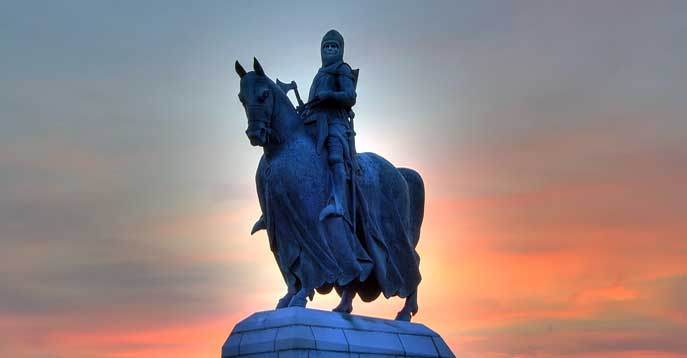 |
The following appeared in 1998 in the Scotsman newspaper: |
| There is a Mr. Mathews who wants a DNA check of Robert the Bruce's heart, because he believes he is the illegitimate son of the late John Talbot Fletcher, whose East Lothian estate has been reported to be valued at £300 million. After time-consuming genealogical research he is convinced that the Talbot Fletchers are descendants of the Scottish king. The heart could be the only genetic link between Mr Matthews and the fortune. Lawyers acting for Mr Matthews have told him that if DNA testing confirmed his lineage he could be entitled to a share of the family's wealth. Mr Matthews, 61, a car plant personnel officer from Swansea, has traced the Talbot Fletchers back to a 17th century nobleman, Sir Robert Bruce, who was said to be a direct descendant of the 14th century monarch. A local historian is now helping him to trace earlier links. Mr Matthews said yesterday: "There still needs to be a lot of research done but this is a positive lead and I have a solicitor working for me who has proved a paternity case using DNA techniques on a body. "The case is still continuing and I won't rest until I have proved the claim. I want recognition that I am John Talbot Fletcher's son and entitled to any rightful share of the inheritance. "I am not going away, I am sticking with this. All I have had from the Fletchers are threats, and I am sick of it." Mr Matthews was born in a workhouse and was adopted soon afterwards. He later discovered that his real mother was Ivy Pinn, a maid who worked at Margam Castle, near Port Talbot, in the 1930s. According to anecdotal evidence from local people Miss Pinn had a 12-year affair with Talbot Fletcher - known as Jock - the married master of Margam and the 11th Laird of Saltoun. Mr Matthews believes the landowner was his father although records of his adoption have gone missing. His birth certificate stated "father unknown". Talbot Fletcher inherited the family estates when he was 30 from his great aunt, Lady Emily Charlotte Talbot, who said in her will that he should hand over the legacy to his eldest son when he died. However, there was no legitimate child. A month before he died in 1995, Talbot Fletcher refused to discuss any inheritance with Mr Matthews. He also refused a blood sample and was cremated three days after his death. Miss Pinn, who was moved to a workhouse when she became pregnant, was also cremated when she died nine years ago. Mr Matthews and his wife, Penny, of Llansamlet, Swansea, believe a DNA test on the heart is the only way to prove his inheritance. Robert the Bruce died in 1329, a hero of the Scottish War of Independence. A spokeswoman for Historic Scotland, which has custody of the heart, said: "Any request for exhumation of the heart would be dealt with by the Secretary of State for Scotland but obviously this is a sacred piece of Scottish history and a lot of thought would have to go into moving it, let alone subjecting it to any detailed analysis." |
 |
 |
| Paul Heron, a researcher at the School of Microbiological Sciences at Swansea University, said the test was feasible: "An organ which has been kept in a lead lined casket could well be a useful subject for analysis. "There was an exercise carried out recently in which it was proved that a man living in a village in Suffolk was a direct descendant of Bronze Age people who had been living there. This was carried out after DNA was taken from bones dating back to that time." Mr Matthews has so far failed in an attempt to have the remains of other members of the Talbot Fletcher family exhumed from a tomb in Saltoun. The Royal Bank of Scotland has estimated the family's holdings at over £300 million, the bulk of which are tied up in East Lothian and in Sussex. The dynasty gave its name to the South Wales steel town of Port Talbot and derived much of its wealth from William Henry Fox Talbot, the physicist credited with pioneering photography. Angela Fletcher, the estranged wife of the current Laird of Saltoun, said yesterday: "As far as I understand there are no links with Mr Matthews." The Fletcher family's firm of solicitors, Mills & Reeve of Cambridge, said yesterday: "We cannot confirm or deny any family link with Robert the Bruce. Mr Matthews has so far been unsuccessful with his claim of a direct link with the family, which the family deny." Novelist Dame Barbara Cartland might be called upon for a DNA sample. She also claims to be a descendant of Bruce. The present clan chief of the Bruces is The Rt Hon Earl of Elgin and Kincardine. According to Who's Who the Earl's full name is Andrew Douglas Alexander Thomas Bruce. He's the 37th Chief of the Name of Bruce, the 11th Earl of Elgin (created 1633) and the 15th Earl of Kincardine (created 1647). Date of birth 17 February 1924, which makes him 75. He has 3 sons and 2 daughters. |
His address is Broomhall, Dunfermline , Scotland KY11 3DV. |
ROBERT THE BRUCE A SUMMARY |
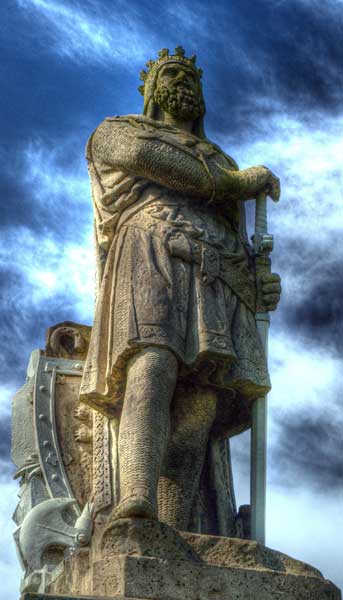 |
The eldest son of Robert and Marjorie, Countess of Carrick. Robert was born at Turnberry but grew up in Antrim, Kintyre, Aberdeen as well as his father's other lands in Carrick and England. At 18 he took over from his father as Earl of Carrick. His feudal superior was Edward I and Robert seems to have been very confused as to where his loyalties lay, to begin with at least. He changed sides five times, in 1297 he sided with William Wallace and is quoted as saying "No man holds his flesh and blood in hatred, and I am no exception. I must join my own people and the nation in whom I was born". He was back with the English a few months later. In 1304 it appears that he was coming round to the Scottish cause for good when he made the Bond of Cambuskenneth with Bishop Lamberton of St Andrews, the head of the Scottish church. If Robert wished to claim the throne then the backing of the church was important and this Bond would help in that respect. In February 1306, after Wallace had been executed, he met John, 'the Red Comyn', in the Greyfriars church, Dumfries. It is not known what happened between them but the final result was that Comyn was dead, stabbed in front of the alter by Bruce. This was considered a terrible crime but Bruce turned it to his advantage by making the stabbing a part of his bid to claim the throne of Scotland. He went to Scone where, in a simple ceremony, he was proclaimed King. The Scottish nation rallied to Bruce who, after a few setbacks, defeated the English at the Battle of Louden Hill in 1307. Edward I was now dead and Edward II was notably less ambitious than his father had been. By 1314 only Berwick and Stirling remained in English hands, the commander of the Stirling garrison had told the besiegers that if help had not arrived from England by midsummer he would surrender. This spurred Edward II into action and by June 23th his army had arrived at Bannockburn. |
| Edward's army consisted of 16,000 infantry, 2,500 mounted knights, and a 20-mile supply train. Robert Bruce could bring to the field only 6,000 spearmen, a few archers, and about 500 light horse. The Battle of Bannockburn took place over the 23-24 June 1314. It began when the English cavalry charged and almost captured Robert but they were driven back with heavy losses. Thomas Randolph's spearmen broke another English column near St Ninian's. The next morning after little rest the English cavalry again charged, this time against the four Scottish 'battails' (Randolph, James Douglas and Walter Stewart, Edward Bruce, and Robert himself). The Scots army was drawn up in schiltrons (squares of spearmen) and because the front was so narrow the English infantry could not be deployed properly and were driven into the Bannock Burn where they were slaughtered. The battle was now over and over 4,000 English dead lay on the field or in the burn, 100 men of rank and all their equipment fell into Scottish hands. Scottish casualties were perhaps one tenth that of the English. |
| Unfortunately Bannockburn did not end the fighting and the War of Independence dragged on until the treaty of Edinburgh-Northampton in 1328:- |
| To all Christ's faithful people who shall see these letters, Edward, by the grace of God, King of England, Lord of Ireland, Duke of Acquitaine, greeting and peace everlasting in the Lord. Whereas, we and some of our predecessors, Kings of England, have endeavoured to establish rights of rule or dominion or superiority over the realm of Scotland, whence dire conflicts of wars waged have afflicted for a long time the Kingdoms of England and Scotland: we, having regard to the slaughter, disasters, crimes, destruction of churches and evils innumerable which, in the course of such wars, have repeatedly befallen the subjects of both realms, and to the wealth with which each realm, if united by the assurance of perpetual peace, might abound to their mutual advantage, thereby rendering them more secure against the hurtful efforts of those conspiring to rebel or to attack, whether from within or without: We will and grant by these presents, for us, our heirs and successors whatsover, with the common advice, assent and consent of the prelates, princes, earls, barons and the commons of our realm in our Parliament, that the Kingdom of Scotland, within its own proper marches as they were held and maintained in the time of King Alexander of Scotland, last deceased, of good memory, shall belong to our dearest ally and friend, the magnificent prince, Lord Robert, by God's grace illustrious King of Scotland, and to his heirs and successors, separate in all things from the Kingdom of England, whole, free and undisturbed in perpetuity, without any kind of subjection, service claim or demand. And by these presents we denounce and demit to the King of Scotland, his heirs and successors, whatsoever right we or our predecessors have put forward in any way in bygone times to the aforesaid Kingdom of Scotland. And, for ourselves and our heirs and successors, we cancel wholly and utterly all obligations, conventions and compacts undertaken in whatsoever manner with our predecessors, at whatsoever times, by whatsoever Kings or inhabitants, clergy or laity, of the same Kingdom of Scotland, concerning the subjection of the realm of Scotland and its inhabitants. And wheresoever any letters, charters, deeds or instruments may be discovered bearing upon obligations, conventions and compacts of this nature, we will that they be deemed cancelled, invalid, of no effect and void, and of no value or moment. And for the full, peaceful and faithful observance of the foregoing, all and singular, for all time we have given full power and special command by our other letters patent to our well-beloved and faithful Henry de Percy our kinsman, and William de la Zouche of Ashby and to either of them make oath upon our soul. In testimony whereof we have caused these letters patent to be executed. |
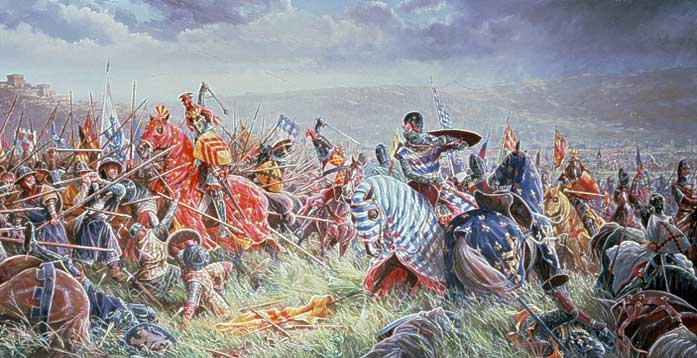 |
| Robert I had saved the nation. This, without doubt, was Bruce's crowning triumph, it was what both Wallace and himself (along with many others) had fought for. After over 30 years it seemed as if the Wars of Independence might actually be over. Although much of Robert's reign was taken up with war he also tried to repair the royal finances, increase trade and to restore law and order. Among the ordinary people he earned the name 'Good King Robert'. He was also a good patron of the church although it was not until the year of his death in 1329 that Pope John XXII lifted the sentence of excommunication. After his death, possibly of leprosy, his heart was taken from his body to continue the fight - this time in the Crusades. |
STARTED BY WALLACE, FINISHED BY BRUCE, SCOTLAND'S FREEDOM |
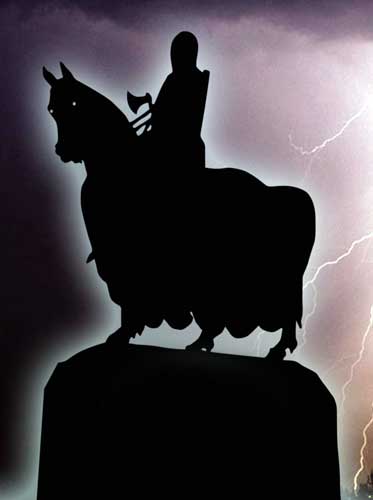 |
Sir William Wallace made a name for himself as a warring rebel who tried to unite Scotland and make it a free land and out of the control of its English neighbours. In 1297 he defeated the English and killed the sheriff of Lanark. He then went on, building his army until it faced and crushed the English forces of the Earl of Surrey at Stirling Bridge. Killing one of his arch rivals, Treasurer Cressingham, his undefeated army celebrated their victory by cutting the flesh of Treasurer Cressingham into pieces and handed them out as a symbolic gesture. Sir Wallace made a belt out of his piece. The King of England, Edward 'Longshanks' I, had had enough and made his way to Scotland with a powerful army to defeat Wallace and his men in the town of Falkirk in 1298. This is where we'll bring in Robert the Bruce. At one time Robert stood next to Wallace proclaiming to the people that he, as royalty, would stand with them in battle to fight for his country. He later changed his mind and decided that the odds were with the English, and so joined ranks with them. Wallace, after being defeated, made for foreign lands to try and gain support for his cause, but on his return to Scotland in 1305, he was captured by the governing English in Glasgow and was taken to London. Convicted as a criminal of the state he was sentenced to death and promptly hung by the neck. As if that weren't bad enough, whilst still alive he was disemboweled, his head cut off and his body cut into quarters. Robert watched while Wallace's head was displayed high on London Bridge and the four quarters of his body taken to Newcastle, Berwick, Perth and Stirling for display there. |
| Edward I had to wonder if he had done the right thing, or had he created his worst nightmare - a Martyr that the Scots could cherish forever! Robert the Bruce, now began to rethink his affairs. At this time he was regarded as a turncoat and murderous traitor by the Scots people, but he was soon to atone for his past decisions and become a greater hero to his kinfolk than Wallace was. During the next few years - like he had done in the past - he made peace with the English and then broke it again, and so on and so on. It wasn't until 1304 that he began to show signs of where his heart was, and he made a treaty with the kirk (the church) that would help his attempt at the throne of Scotland. Robert the Bruce new that with religion behind him he was more likely to win the support of the people. Time passed and by the end of 1305 he was a natural leader and made his plans for the throne of Scotland clearer. A meeting with John the red Comyn at Greyfriars church in Dumfries marked the last obstacle in his path, and during the argument they were having Robert stabbed John to death. Ceasing his chance he then moved on to Scone where he claimed the throne and was crowned King Robert I of Scotland, and was given the traditional blessing from Countess Isabel of the MacDuffs. On becoming King, the Scottish people gathered around their new king and looked to him now for their freedom. After a number of battles, some successful and others not, it is at this point that the legend of Robert the Bruce is best known. After a bloody defeat, and whilst taking refuge in a dark cave escaping the English army, Robert sat and pondered his campaign. Feeling the power of failure he looked up and saw a small spider climbing up its silken thread to reach its web, time and time again the spider fell, but returned again to struggle its way home. As you might have guessed, the influence that this imagery had on Robert lead him to pick up his sword and exclaim "If at first you don't succeed - try, try again!". His words remain with us all still. And that is indeed what he went out and did. Regaining in strength he punched his way forward defeating the English in his stride. Edward I had died, and his son Edward II took his place and decided that Robert the Bruce had to be stopped. With an army more than twice that of King Robert's, Edward marched to Scotland and faced Bruce at Bannockburn. A mighty battle was fought and Edward's army was defeated. The battle of Bannockburn remains as one of Scotlands greatest victories, and at Bannockburn the flower of England was crushed and 'The Flower of Scotland' was victorious. And Scots still remember the victory in our National Anthem (although unrecognised) called 'The Flower of Scotland'. Robert the Bruce was now marking himself in history as a hero to his people. But he hadn't finished there. The victory at Bannockburn did not end the fighting, but it cast rumours amongst the opposing English that an army of half the size of Edwards had won - it gave Bruce the upper hand. Finally the wars were over and he had managed to achieve what was thought impossible - freedom for Scotland. The Edinburgh-Northampton treaty was formed and signed in 1328 giving King Robert the Bruce his greatest victory - complete rule of Scotland as an independent country, with no subjections. Now known throughout the land as 'Good King Robert' he further made a treaty with the Pope known as the 'Declaration of Arbroath' and this still stands as the most remarkable statement of nationalism in medieval history. The support of the Pope to the Scottish cause. For a while King Robert I named his brother Edward as heir, but he was killed (1318) in Ireland trying to claim the Irish throne before he could claim the title. the succesion was handed to the family of Robert's daughter, Marjory, who had married Walter Steward. However in 1324 the king finally fathered a legitimate son, the future David II. Now at peace with England, reconciled by the Pope, master of an ordered realm and with the succession now secured, on June 7th 1329 Robert the Bruce of Scotland died of leprosy and his heart was cut out and taken on a crusade as a final gesture to God that he wanted to atone for the sins of his youth. He didn't need forgiveness from Scotland - they had forgiven him a long time before. So Robert the Bruce - King of Scotland had achieved the dreams of Wallace. Although Wallace is still the true patriot who never once wandered from his devotion to his homeland, Robert the Bruce - after some wandering and indecision about his loyalty, was the one who gained Scotland its freedom. As to who is the 'Braveheart', I know who I would stand by, its up to you to make your own mind up! The question will always remain - Would Sir Wallace approve of Robert the Bruce's achievements? I think he would. Wallace was well known for his cause: no matter what it took, he wanted freedom for Scotland - was prepared to die for it - and did. It is a romantic thought that the Bruce's campaign was the asking of forgiveness for the betrayal he bestowed on Wallace some years before, and it may be nice to think that they have long since made their peace - but would they approve of the Scotland of today? |
BIRTH OF A NEW NATION |
By Ted Cowan |
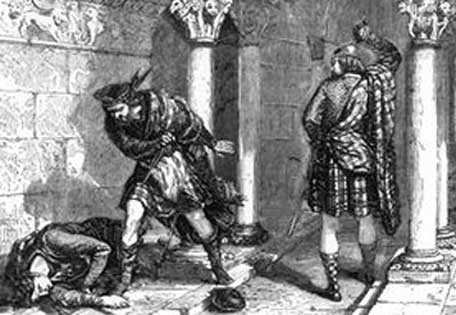 |
Seven hundred years ago, Robert Bruce was coronated at Scone, the ancient inauguration place of the kings of Scots in the presence of four bishops, five earls and 'the people of the land'. As he was heralded as legitimate claimant by Bishop Lamberton of St Andrews, a golden circlet was placed upon Bruce's head by Isabel, Countess of Buchan, representing the absent Earl of Fife whose hereditary function this was. The date was auspicious; Lady Day commemorated the Annunciation of the Virgin Mary - a day of new hope, salvation, liberation and redemption. Yet this was no celebration in which the nation at large could rejoice. The central figure, Robert Bruce, was an excommunicant, damned to eternity for having blasphemously defiled the sanctuary of the church by killing his rival, |
John the Red Comyn, at the altar of Greyfriars in Dumfries. Furthermore, a majority of Scots believed Scotland already had a king, their exiled head of state. King John Balliol had been judged, in 1292, to have the best claim to the kingship by Edward I of England, who dismissed the bid by Bruce's 80-year-old grandfather. |
Ted Cowan is professor of Scottish History at the University of Glasgow and director of Glasgow's Crichton campus at Dumfries. He is the author of For Freedom Alone: The Declaration of Arbroath, 1320 (Tuckwell Press) |
BRUCE ALMIGHTY |
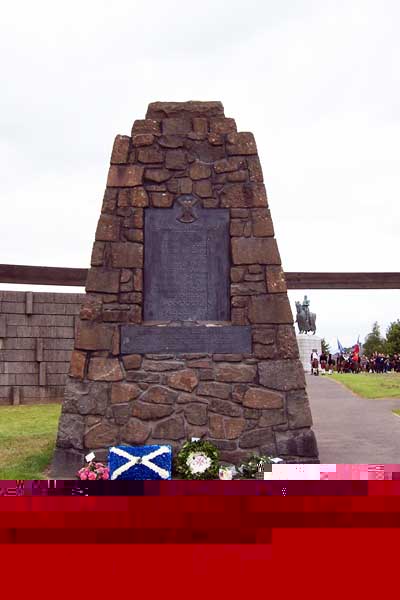 |
At the time of writing, the line-up of runners and riders in the Greatest Scot poll shows William Wallace out in front, with more than a third of all votes; Robert Burns in second place, with a quarter of the votes; and Robert the Bruce in third place, with a little over 10%. In a recent poll, a group of academics and historians opted for Burns as the Greatest Scot ever. Few people would dispute the choice of those three men as our greatest compatriots; but there is a case to be made for altering the order and recognising Robert the Bruce as the greatest man in Scottish history. That is not in any way to disparage his two competitors. It is a matter of defining more strictly the concept of greatness. Burns, beyond dispute, was a great writer. His appeal is global, which, for a poet born into a very localised environment in a small country, is a measure of his talent. He was undoubtedly, in a literary and human sense, great; but was he the greatest? What we should be looking for in this contest is a superlative contribution to Scotland. Does Burns measure up to all the criteria that implies? Wallace, on first appraisal, seems to do so. His greatness of heart is the stuff of legend, compounded by the cruelty of his fate. If we are talking about patriotism, courage and selfless dedication, then Wallace has it by a mile. Yet there is one component missing: success. It might appear callous and even cynical to downgrade Wallace because, having fought so gallantly against superhuman odds, he was defeated after two years. Yet all the other historical characters who have been awarded the attribute "the Great" - Alexander, Peter, Catherine, Frederick - had careers crowned with success. |
Wallace was a loser - a noble, brave, heroic loser, but still ultimately unsuccessful. That is probably why, like Bonnie Prince Charlie, he occupies such a special place in Scottish hearts. A sentimental identification with the underdog is one of our national characteristics. In the unimaginable event of Scotland winning the World Cup, it is a fair bet the Tartan Army would become disoriented to the point of disaffection. |
BRUCE'S SECRET WEAPON |
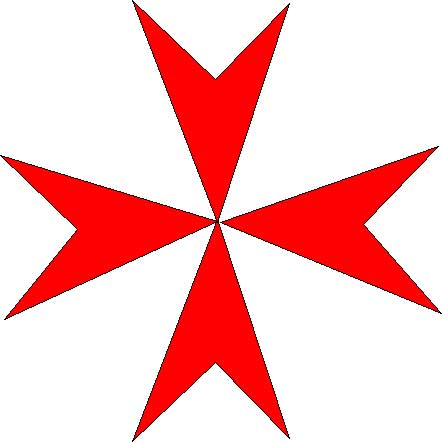 |
Bannockburn is acknowledged as one of the most remarkable victories in the history of warfare. It is still almost unbelievable how Robert the Bruce's army of common folk, outnumbered three to one, took on the greatest war machine in medieval Europe and destroyed it so completely. But there are many puzzling aspects to the traditional story of Bannockburn. Firstly, Bruce's small army of around 6000 was composed mainly of foot soldiers. These were highly trained and highly disciplined at a time when infantry was usually poorly led and disorganised, and took a secondary role in battles. IN fact, the Scottish troops were of a calibre never found again in any battle between Scots and English. The four battalions of spearmen, each formed into a 1000 strong schiltrom, moved and fought as one. Each man would place his left arm upon the shoulder of the man in front until the schiltrom formed a homogenous mass through which no armoured cavalry charge could penetrate. |
The small troop of light cavalry commanded by Keith carried out their orders to the letter, no more, no less. They cleverly anticipated the tactics of the Welsh archers who tried to pour arrows on the Scots' flank, as they had done at the Battle of Falkirk 16 years before, and quickly put them to flight. It was as though someone who had fought on the English side at Falkirk was now directing the Scots' strategy at Bannockburn. It is curious that the Scottish soldiers were so well equipped. Each man possessed several items: a leather headpiece and steel helmet; a thick padded leather coat; a pair of protective and flexible steel gloves for holding the shaft of his iron-tipped 12 foot spear; and knives, axes and swords as personal weapons. Where did all this equipment come from and how was it paid for? Swords, weapons, and spear shafts were usually imported from the Continent and cost a great deal of money. Even at Culloden in 1746 many of the Highlanders were armed only with scythe blades attaches to poles. Scotland in 1314 was a land wracked by 20 years of war. Its economy and its agriculture were laid waste. Many of the wealthy Lowland nobility were fighting on the English side How then did the Scottish army receive such extensive and expensive equipment when the English fleet controlled both the Irish and North Seas, and how was the equipment paid for when our treasury was empty? How, too, did Bruce devise the brilliant tactics of this set-piece battle when nothing in his previous record suggests he was anything more than a competent guerilla commander? It will be remembered that by mid-day on 24th June 1314, the 6000 Scots were utterly exhausted after fighting non-stop for eight hours in the summer heat. However, very few English had been killed by that time and only a small percentage of their 20,000 strong army had actually come into contact with the Scots. The steady pressure of the massed schiltroms simply pushed back the English armoured knights before they could move , penning the rest of their army behind them between the tidal Pelstream and Bannock Burns. Then came the renowned appearance of the Scots camp followers which caused the English ranks first to waver and then to break in panic. It was really fear that destroyed Edward's army, but fear of what? Contrary to tradition, the so-called camp followers did not tie towels and blankets to poles and come running down Gillies Hill, and neither were they simply servants and cooks. The name of the hill and the story itself are 18th century inventions. Barbour's Bruce says they were yeomen with spears plus some lesser people who were stationed in the valley between Gillies Hill and Coxethill, through which the M9 motorway now runs. This then was part of the wooded New Park and so these 1000 men, mainly from Argyll, would not be visible until they reached the escarpment at St. Ninians leading down to the carse. Further, they were not running, but marching in military order behind captains, and the move was not impromptu, but apparently anticipated by the Scots. Yet these newcomers alone would not have inspired such fear for their numbers and quality would have been identifiable at such short range. |
| I suggest that what broke Edward's army was the sight of the men who led them, perhaps no more than 50 or 60 in number; men who wore their hair close-cropped and their beards long; who wore chain mail, and over it a white smock, the famous cross patte. They marched beneath their black and white banner called The Beauseant, and were instantly recognisable to the front rank of the English as the Poor Knights of the Temple of Solomon, or Knights Templar, the Warrior Monks. They were renowned as the most battle-hardened, highly-trained and ferocious fighters in the realms of chivalry, yet strangely, their Christian Order had recently been condemned to Hell by the Pope and excommunicated in every country in Christendom - except Scotland. The Order of the Poor Knights of Christ and the Temple of Scotland was founded in Jerusalem in 1118 by nine Crusaders. Its specific purpose was to keep the highways safe for pilgrims in the Holy Land, and in recognition of this worthy cause the King of Jerusalem, Baudouin I, gave them a wing of the royal palace. This was reputedly built on the foundations of Solomon's Temple and from this the new Order took its name. The Order of Solomon's Temple grew in size and the sons of european nobility flocked to join. New knights took an oath of poverty, chastity, and obedience and were highly trained in all aspects of warfare. They were forbidden to shave and wore white surcoats with the distinctive splayed red cross. They were obliged to fight to the death and never retreat. They combined religious mysticism with a reputation as ferocious fighters and became famed as the Warrior Monks, or Knights Templar. |
 |
Pope Innocent II in 1139 issued a Bull stating the Templars were responsible only to the Pope, and not subject to secular or church authority in any country. Gifts of land and money were showered upon the Order which soon developed into an international empire headed by a Grand Master. Money could be deposited with a Templar bank in Jerusalem and withdrawn in London on presentation of a chit and secret gestures. In fact, the Order is credited with inventing the cheque. The Templars had their own fleet which initially transported pilgrims and, later, all manner of goods. They also had their own armourers, architects, stonemasons, hospitals, surveyors etc. In Scotland the Templars held vast lands, more than 500 properties in country and towns. David I had invited the Order to his kingdom in 1128 and kept a number of knights around his person, "retaining beside him the most noble brethren of the distinguished military order of The Temple of Jerusalem, he made them by day and night the custodians of his morals", according to a contemporary writer. They were also, no doubt, the custodians of his person. All parts of Scotland, except the West Highlands, contributed heritable property to the Order. The principal preceptory and Scottish headquarters was at Balantrodoch, now Temple, in Midlothian. The other preceptories included Temple Liston, or Kirk Liston, near Edinburgh Airport; Temple Denny near Falkirk; Thankerton in Lanarkshire; and Maryculter in Aberdeenshire. The latter name derives from the Chapel of St. Mary, founded by the Templars in 1187 after William th Lion granted them 8500 acres there. Templars' Park at Maryculter is now the name of a Boy Scout camping and training ground. Brain de Jay, (He was the model for the sinister Templar Brain de Bois-Guilbert in Sir Walter Scott's Ivanhoe) Master of the Templars in Scotland in 1298, brought north the large body of Welsh archers who fought in Edward I's army against William Wallace. The Welsh troops stayed first at Balantrodoch, the principal Templar base, before marching on to join the English army at the Battle of Falkirk in July 1298. During the battle it was Templars who directed the devasting arrow power that broke the Scottish spear schiltroms, and it was Templar Knights who led the final cavalry charge that destroyed Wallace's army. Templars in the British Isles came under the jurisdiction of the Master of the London Temple. |
| In 1291 the Holy Land finally fell to the Saracens with the capture of the fortress of Acre. The Templars defended the castle to the death after placing the women and children on the last galleys. The headquarters of the Order then moved to Cyprus, but with the loss of the Holy Land the Templars were obliged to find another reason for their existence. The Order was now unbelievably wealthy, dealing in commerce on a grand scale and lending vast sums of money to governments and kings. The headquarters in Britain were at The Temple in London where their typical circular church still survives. Here were kept the English crown jewels, pawned to the Templars in 1260 by Henry III to raise funds for his frequent warring expeditions. However, as time went on the Templars became arrogant and dissolute and "to drink like a Templar" became a catch phrase. Strange rumours began to surround the Order. It was said the Knights repudiated the crucifixion, spat upon the cross and held all manner of obscene rituals. They had certainly absorbed both Judaic and Islamic beliefs, and esoteric knowledge, through their long connection with the Middle East and had adopted much that was alien to orthodox Christianity. Their downfall came in 1306 when Philippe IV of France took refuge from a mob in the Paris Temple and was stunned by the wealth he saw. He was also aggrieved at being refused admittance to the Order and alarmed that the Templars intended forming an independent Kingdom in southern France. In October 1307, he ordered the arrest of all Templars in France. Many were hideously tortured although the Preceptor of France is said to have fled along with 18 of the Order's galleys and much of the Paris Temple's wealth. Pope Clement V was persuaded to excommunicate all Templars for heresy and ordered their arrest in every kingdom in Christendom. |
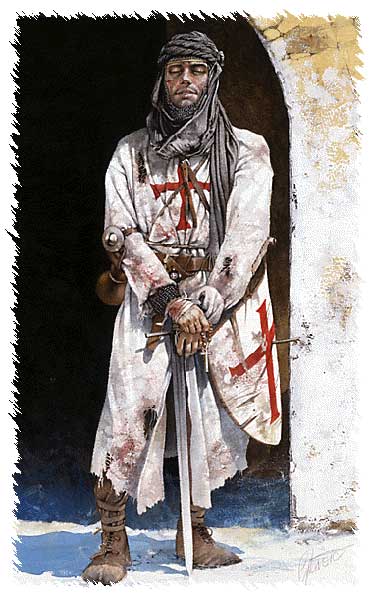 |
In 1312 the Order was officially dissolved by the Pope, and in March, 1314 Jacques de Molay, Grand Master of the Order of Poor Knights of Christ and the Temple, was roasted to death over a slow fire on the Ile de Seine de Seine in Paris. The Order was finished. In January 1309, Edward II of England ordered Sir John de Segrave, his appointed Guardian of Scotland, to arrest all Templars still at large in the country and report them to the Inquisitor's Deputy. This latter official was Bishop William Lamberton of St Andrews who had been released from Winchester Castle the year before, after taking a new oath of allegiance to Edward II, and had gone directly from there to Rome to visit the Pope. Back home, the wily Lamberton paid lip service to the Pope's edicts and the English king's instructions, but remained totally committed to the cause of the excommunicated Robert the Bruce and Scottish independence. It is not difficult to imagine the bargain Lamberton made with the two important Templars he interrogated at Holyrood in December 1309. Far from questioning them on heresy, it is more likely he made them an offer; "Supply us with arms, money and expertise and we will give the Templars sanctuary in the only land where the Pope's writ does not run." Because of condition in Scotland the Papal Bulls were never proclaimed here and legally the Templars were never dissolved. From that time on the fortunes of Robert the Bruce took a dramatic turn for the better. War material began arriving in Scotland from Ireland in considerable quantity. This is so alarmed the English authorities that Edward II issued an edict in 1310 to his officials in Ireland, "prohibiting under the highest penalties all the exportation of provisions, horses, armour, and other supplies from ports where any vessel touches ... to the insurgent Scots which he hears is carried on by merchants in Ireland." |
| There was, however, no arms industry in that impoverished country and the principal towns such as Dublin were in English hands, so where were all these weapons coming from? Only the Knights Templar had access to such large quantities of armaments and they had extensive holdings in Ireland including at least six preceptories and 11 castles. Although some of the Irish Templars were arrested in 1308 the rest seem to have moved to the country. It would have been a logical move for the Templar fleet, based at the French Atlantic port of La Rochelle, to slip away and sail to north-west Ireland. From there they could easily transport arms across to Scotland in secret. Certainly, the Templar fleet seems to have vanished completely along with the Preceptor of France and a number of Knights and lesser ranks and 50 horses. When the authorities later burst into the Irish Templar properties they found them empty of weapons, and as the historian H.Wood remarks in his tract "The Templars in Ireland," "It is extremely surprising to find the abodes of a military order so poorly equipped with arms." This was about the same period as Edward was complaining about the export of arms t Scotland! Thus there seems little doubt it was Templar arms that were being shipped to Scotland in Templar ships. The logical route for a fleet sailing from north-west Ireland, and wishing to avoid interception, would have been into Loch Sween in Knapdale where Castle Sween had a substantial harbour, and arms could be transported over Kintyre for onward shipment. This area had recently been restored to sir Neil Cambell, Bruce's staunch ally, after Bruce had defeated the MacDougalls of Lorn at the Pass of Brander in August, 1308. It was an ideal location for refugee Templars to settle. It seems more than coincidental that about this time a group of some carvers, known as the Loch Awe School, began work in this area and were responsible for the sophisticated stone carvings found in Argyll and the Western Isles, the earliest of which dates from the early 14th century. These carvings are unique in Scotland and of a remarkable quality for the period. It is also more than coincidental that many of the gravestones now gathered in Kilmartin churchyard from other churches in the area depict a simple carved sword, unmistakably the military gravestone of a Knight Templar. The sword emblem is unique to this part of Scotland as are representations of tau-headed staffs, used in eastern churches. At the little ruined chapel of Kilmory near Catle Sween is a Templar cross carved in stone, and another stone slab portrays a sailing ship of a size and design far larger than a west coast galley. The implication is that a group of immigrant artisans and craftsmen arrived in this area in the early 14th century and established themselves as stone carvers. On the east shores of Loch Awe, just north of Ford and buried deep in forest, lies the ruins of Kilneuair Church. This is a strange building, barely marked on any map and yet of a beauty and size most unusual in the West Highlands. Information about it is very sparse. The stones are said to have been transported manually from a previous church at Killeven on Loch Fyne. Kilneuair was the principal church for the area until the mid- 16th century when the centre moved to Kilmichael Glassary. Most interestingly, the outlines of an earlier circular building can be traced on the west side, and this was the traditional design of a Templar church. Even more interestingly, a gravestone here bears the Templar cross patte. Thus it seems likely that Bruce's army at Bannockburn was not only equipped by the Templars but probably trained by them, too. Bruce's dramatic encounter with de Bohun was an unheard-of move for someone trained in conventional European chivalry, but it was a manoeuvre common enough in the Middle east where the Saracens effectively used their nimble, smaller steeds against the steel-clad Crusaders on their heavy horses. Had Bruce been coached in that move and did he deliberately invite the attack to raise Scottish morale? (According to the Stella Templum Bruce was trained in the martial arts by Templars at Dalhousie in Midlothian, only a few miles from their headquarters at Balantrodoch) Then there is the curious episode when Sir Alexander de Seton, a knight serving with the English, left Edward's army the night before the battle and brought the Scots vital information on the English forces disposition, size, and morale. Historians have long conjectured on the reason, but Seton had Templar connections and was undoubtedly acting under instructions. |
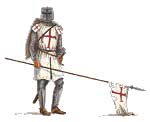 |
After Bannockburn a few of the Templars and certainly many of their artisans seem to have remained in the area south of Loch Awe where they probably married into the local population. Some English and Scottish Templars may have joined the Knight of St. John of Jerusalem, a still extant charitable institution, to whom was transferred all the Templar properties after their dissolution. However, these properties seem to have been administered on behalf of the defunct Order and were never officially granted to the Hospitallers of St John. As late as the 16th century over 500 properties in Scotland are recorded at Terrae Templarie, Templar Lands, and thus not officially belonging to the hospitallers. |
There is no record of the Templars' part in Bannockburn probably because Bruce was anxious to become reconciled with the Pope, and Archdeacon Barbour who wrote the definitive Bruce in 1375 would certainly not have referred to them either as the very mention of their name was anathema to the church. Did the Order of the Temple go underground in Scotland and continue as a secret society? It is said that when Graham of Claverhouse fell at Killiecrankie in 1689 he was found to be wearing a Templar smock and cross beneath his clothes. Baignet and Leigh in their best-selling book The Temple and The Lodge trace the rise of Freemasonry from the absorption of Judaic and Islamic beliefs by the Templars, and also from architectural practices of the Middle east which the Templar artisans adopted. The Templar refugees in Scotland, particularly the stonemasons, passed on these traditions and secret rituals to operative stonemasons in Scotland and also to an elite body of the nobility. The authors suggest that Freemasonry was taken over by the Jacobites and used as a secret society dedicated to preserving the Stuart dynasty. Certainly, the earliest surviving minutes of Dunblane No. 9 Lodge, dated 1696, are signed by some of the principal Jacobite conspirators. It was for this reason that Grand Lodge, the ruling body of Freemasonry was founded in 1717 in London as a Hanoverian attempt to counter the Jacobite monopoly. It is interestingly that the higher degrees of Freemasonry, particularly the older Scottish Rites, were in existence long before the formation of Grand Lodge and even today remains independent of that authority. Final proof of the connection between the Knights Templar and Freemasonry can be seen on a 14th century Templar gravestone at Kilmory chapel which quite clearly portrays a masonic set square and a Templar cross. So it seems the Templars who escaped persecution did flee to Scotland, bringing with them arms and expertise which secured Scottish independence. They brought with them, too, many traditions and beliefs from the Middle East which were preserved in Scotland and eventually adapted as modern Freemasonry. It is fairly generally accepted that Freemasonry began i Scotland and was exported to the Continent by the Garde Ecosse, the Scots Guard, the elite body guard of the French kings. Perhaps this small band of refugee Knights contributed as much to the heritage of the world as they did to Scotland's freedom. The Scottish Knights Templar of the Chivalric Military Order of the Temple of Jerusalem have a present strength of 150 selected members. They are a non-Masonic Order brought into the 19th century as the Militia Templi Scotia and are a repository of Scottish Templar tradition and relics of Jacobite Freemasonry. The Masonic Knights Templar, on the other hand, is one of the higher degrees of Freemasonry and was founded around 1810 as a specifically Christian Order. The Scottish Knights Templar possess a secret and different version of Scotland's history which is contained in their Stella Templum, of which the above article forms part. The rest is considered too controversial for release at present. The Order have recently purchased Dull Church in Perthshire to hold the stone given into their care when St Columbia's Church in Dundee was closed in 1989. They believe this is to be the Stone of Destiny recovered from Westminster Abbey in 1950. It was found in Parliament Square, Edinburgh, in 1965 and given into the custody of the Rev. Mackay Nimmo of st. Columba's. The Stella Templum refers to four stones: St. Columbia's Seat; the Pictish Stone; the Celtic Stone; and the Stone of Destiny. The author of this article believes the last three are one and the same, but that the true Stone still remains hidden at Dunsinnan. |
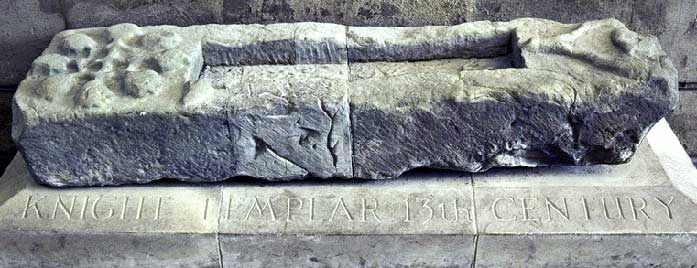 |
Our Thanks To GREYFRIARS PRECEPTORY For This History Lesson |
We'd like to thank everyone who contributed images to this history lesson, especially artist MURRAY ROBERTSON |
For More Info On The Masons & The Templars Click HERE |
 |
 |
© Paisley Tartan Army 2008-09
